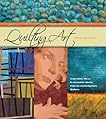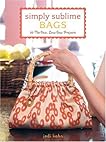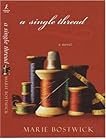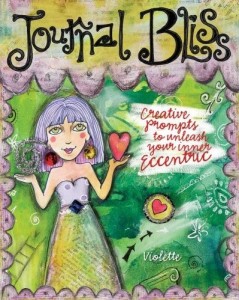Yesterday was a travel day for me as I jetted off to the Pacific Northwest for a week of sewing, writing, relaxation, and, yes, some work as well. I arrived in Seattle under clear blue skies and crisp fall temperatures. The pilot announced the temperature and I immediately thought of my cozy Polartec scarf languishing in the scarf/hat/gloves basket at home.
After a minor car confusion, we headed off to begin my vacation. When we arrived at TFQ’s house, I was confronted with a lovely pile of books in which she had gathered together for me to review, peruse, read and flick through.

I have seen a number of these books here and there, but some were new to me, such as A Year of Mornings by Maria Alexandra Vettese. She and her co-author, Stephanie Congdon Barnes have also written A Year of Evenings.
 A Year of Mornings: 3191 Miles Apart by Maria Alexandra Vettese
A Year of Mornings: 3191 Miles Apart by Maria Alexandra Vettese
My rating: 3 of 5 stars
My good friend is a great source of new books.
This book is the culmination of a year long joint blog project in which the authors posted a morning picture each day. I liked the idea of this book. It was mostly pictures and could be a source of inspiration. I can imagine putting a piece of tracing paper over one of the photos and tracing an outline of the shapes to get me started on a quilt.
The photos have a certain color and ‘Shabby Chic’ aesthetic, which I think demonstrates the authors’ style as well as their surroundings.
One thing about this book is that it is a celebration of the every day. There are rumpled beds, half eaten bowls of oatmeal, braids and small children reading Calvin and Hobbes at the breakfast table. I like that about this book, because I, sometimes, think that we look for the special and extraordinary outside of our lives and try to draw it in without looking at the specialness of the every day IN our lives.
TFQ pointed out, in the Gwen Marston book, Abstract Quilts in Solids, that the first line is something like “This is a quilt book for grownups.” I love that line, because she goes on to explain that the book does not have patterns, that it is for inspiration and that most people have simple quilt directions in a myriad of other books. Thank you, Gwen Marston!
I don’t want to give anyone the impression that there is something wrong with patterns, because there isn’t. I don’t, however, want to make a quilt just like someone else’s. Also, I am not capable of it. Did you read the wine bag post? Typical of me to change the pattern out of the gate! I know this is an issue that I go on about often. I am still trying to find the right words to express my feelings about patterns, which seem to be complicated!
 Quilting Art: Inspiration, Ideas & Innovative Works from 20 Contemporary Quilters by Spike Gillespie
Quilting Art: Inspiration, Ideas & Innovative Works from 20 Contemporary Quilters by Spike Gillespie
My rating: 4 of 5 stars
To say that I read this book would be just a bit of stretching the truth. I read parts of this book and scanned others.
Letter to the publisher and author: To Whom it May Concern: please write and publish other books like this. I love the lush colors and descriptions of the processes that the artists go through to produce their quilts. Thank you for not including patterns by each of the artists as I do not want to reproduce to their work. You have provided spectacular inspiration for me and I greatly appreciate it. I look forward to perusing this book further and frequently. Sincerely, JL.
This is a book of artists and their work. Among the artists are Pam Rubert, Lisa Call, Jane Burch Cochran, Deidre Adams, Joanie San Chiraco and others I had never heard of such as Joan Dreyer, Angela Moll and Boo Davis.
Each artist is pictured, along with her quilts and, in some cases, her studio, her sketchbook or her surroundings. Details of the pieces are in abundance. The processes of the artists are described as well. The artists talk about how they get their ideas, how they got to where they are and, additionally, where they are going.The reader gleans some hints about the personal lives of the artists as manifested in the work. One of Lisa Call’s pieces, Structures #10 is colloquially referred to as her divorce quilt. There is a definitely a story there.
The detail shots are great. In some cases you can see the stitching up close and personal, which I love.













